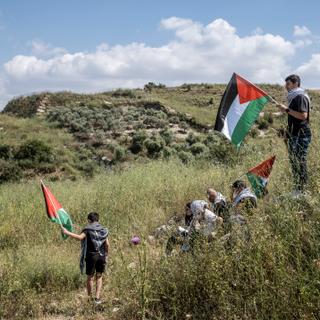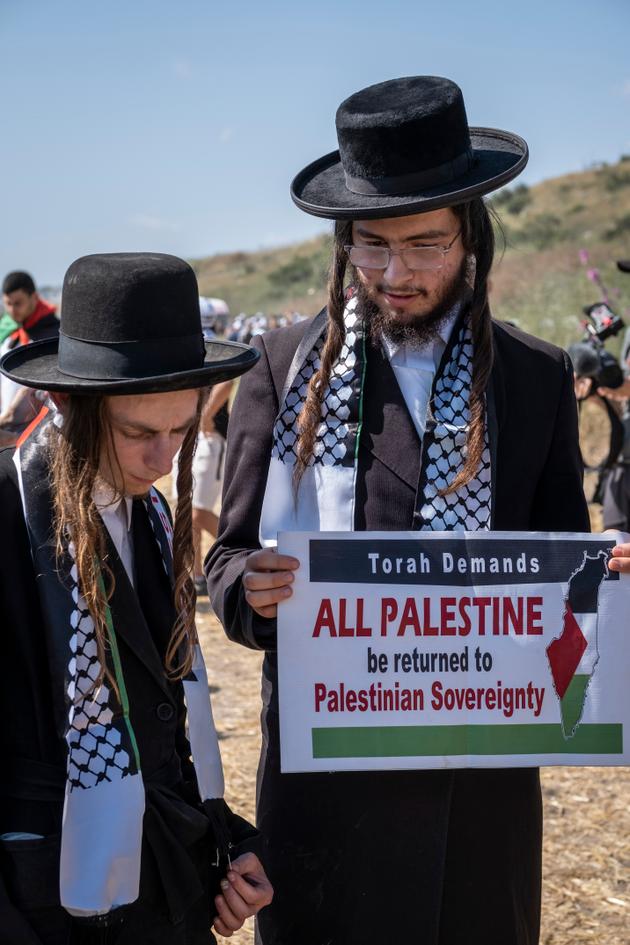


For Palestinian citizens of Israel, commemorations of 1948 Nakba come with stigma
FeatureThe October 7 attack has increased mistrust of Israel's Palestinian community, which represents 20% of its population. Most demonstrations in solidarity with Gaza its members have tried to organize have been banned or dispersed.
Twenty kilometers from Haifa, Israel's third largest city, a small crowd gathered in a bleak corner of the countryside on Tuesday, May 14. People began to look at each other with a mix of apprehension and pride. There was initially one flag, then three, then 10, and then too many to count. It was the first time since October 7 that those in the crowd displayed the colors of the Palestinian flag. These several thousands of people had come to commemorate the Nakba ("catastrophe"), the forced exodus of Palestinians in 1948, when Israel was created.

The ceremony almost didn't take place. Since the Hamas massacre on October 7, which left 1,200 people dead, most of them civilians, Israel's Palestinian component – some 2 million people, 21% of the country's population – has more than ever been seen as a "fifth column," a pool of sympathizers for the Islamist movement. Most demonstrations in solidarity with the people of Gaza that members of this community wanted to join were banned, or quickly dispersed.
After lengthy negotiations with the police, the commemoration, traditionally held on May 15, was authorized to take place a day early to coincide with Israel's Independence Day. It took place on the outskirts of Shefa Amr, a predominantly Arab town in the north of the country. Fields of wheat dominate the location, and marches set off on a path with flags in hand and sang as they set off in the direction of Hawsha, a village destroyed in 1948. One of the demonstration's organizers sighed: "Everything has been so complicated to be allowed to do this march here, away from the eyes and ears that it might bother."
In the eighth month of the war in Gaza, the fear of a new Nakba haunts Palestinians, both in Israel and in the occupied territories. Fears are rife that the idea of expelling the coastal enclave's residents, popular in far-right circles, will eventually become reality. As Palestinian flags were pulled from the trunks of cars in Shefa Amr, 170 kilometers further south on the edge of Gaza, the national security minister, Itamar Ben-Gvir, a Jewish far-right extremist, said: "We must encourage the voluntary migration of Gazans."
Call for strike
Mohammad Barakeh is the former leader of the far-left Hadash party, which unites Jews and Palestinians and now heads the High Follow-Up Committee for Arab citizens of Israel, the body that defends the community's interests. In Hawsha, he spoke from a podium. He called for a general strike to bring an end to the war in Gaza, which has claimed the lives of over 35,000 Palestinians, most of them civilians, according to the Hamas-run Health Ministry. Leaflets from an anonymous youth movement circulated. They were the first to call for a strike; they are angry.
You have 67.69% of this article left to read. The rest is for subscribers only.
